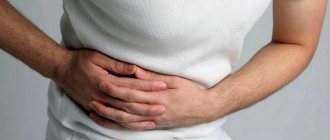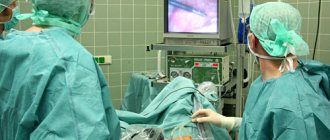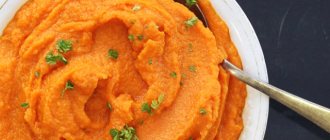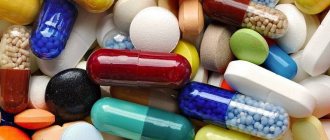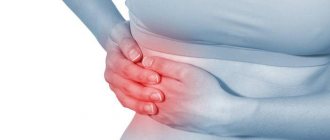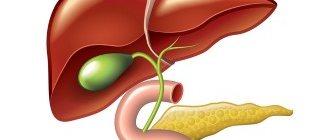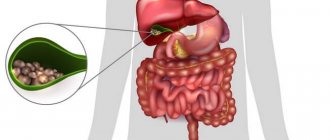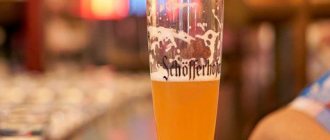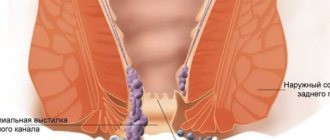Surgery to remove the gallbladder (cholecystectomy) is often an effective method that allows a person to part with constant and painful pain. However, all patients after such an operation have to adhere to some restrictions in their diet and lifestyle in general. A special point after removal of the gallbladder is the ban on the use of alcohol.
Many patients after cholecystectomy are interested in the question: when can you start drinking alcohol after removal of the gallbladder, what will the body’s reaction to its use be, and what alcoholic drink is allowed for people after such an operation?
The role of the gallbladder in the body
The gallbladder is an organ where bile produced by the liver accumulates. In the body, the gallbladder performs the following functions:
- accelerates the process of absorption of fats and vitamins;
- neutralizes the harmful effects of pepsin, a component that can disrupt the functioning of the pancreas;
- destroys various bacteria and microorganisms, which disinfects the intestinal contents;
- helps maintain the tone of the small intestine;
- speeds up the process of food passage;
- promotes the production of mucus, which prevents harmful bacteria from adhering to the intestinal walls;
- accelerates the process of excretion of some components that are not filtered by the kidneys;
- stops the secretion of gastric juice and improves intestinal digestion.
Gallbladder
In healthy people, the body produces an amount of bile equal to the amount of food consumed. With a deficiency or absence of a component, the process of digestion and absorption of microelements and vitamins coming from food sharply worsens, resulting in an increased risk of developing various pathologies.
Effects of alcohol on the gallbladder
Drinking alcohol stimulates the production of bile, which enters the gallbladder in excessive quantities. If a person eats healthy food, the sphincter of the bladder relaxes, its walls contract, as a result of which bile enters the duodenum and ensures normal digestion. But the body reacts differently to the intake of alcohol:
- Excessive alcohol consumption provokes spasms of the gallbladder, and stagnation of bile is often observed and the likelihood of cholelithiasis increases;
- ethanol breakdown products injure the walls of the organ, provoking the development of cholangitis and cholecystitis;
- the components contained in alcohol neutralize the bactericidal properties of bile, which disrupts fat metabolism and increases the likelihood of stone formation;
- Drinking alcohol when you have gallstones provokes severe pain and promotes the movement of stones. As a result, the likelihood of blockage of the bile ducts and the manifestation of painful symptoms increases. In such cases, surgery is often required.
Drinking alcohol is especially dangerous for patients diagnosed with cholelithiasis (GSD). Pathology does not always require surgical intervention, but only if the patient follows a diet and abstains from alcohol.
When is cholecystectomy performed?
Gallstone resection is one of the most common operations prescribed in modern medicine. Despite the possibility of resolving a certain problem that was an indication for intervention, it can also cause negative consequences, especially if the doctor’s recommendations are neglected during the recovery period.
In most cases, the operation is successful. Complications rarely occur, including:
- damage to the bile ducts during surgery;
- release of bile fluid into the abdominal cavity;
- development of a purulent process in a postoperative wound;
- bleeding in the abdominal region;
- thromboembolism;
- development of the adhesive process.
A specific liquid accumulates in the gall cavity - bile, which is involved in digestive processes. Various pathologies can develop in the organ. In some cases, for example, when seeing a doctor late, it is impossible to resolve them using non-surgical methods, and the only option is surgery.
Surgical intervention for resection of the gallbladder is prescribed in the following cases:
- with cholelithiasis;
- with non-calculous cholecystitis;
- with cholesterosis;
- with polyposis;
- with metaplasia;
- for pathologies accompanied by pain symptoms that cannot be relieved conservatively.
In most cases, the indication for resection of the gallbladder is cholelithiasis. The pathology is characterized by the formation of stone-like formations in the organ cavity. If the operation is not performed on time, cholelithiasis is complicated by perforation of the gallbladder, peritonitis, and empyema of the organ.
Despite the effectiveness of cholecystectomy in the treatment of many gallbladder diseases, it is not performed in some cases:
- in severe general condition;
- for bronchial asthma, hypertension, myocarditis in the stage of decompensation;
- for malignant neoplasia;
- for severe endocrine and metabolic pathologies, for example, diabetes;
- for diseases of the hematopoietic system.
Before surgery, the patient is warned that after organ resection it is necessary to adhere to certain rules regarding nutrition.
Changes in the body of patients after cholecystectomy
After removal of the organ, the patient feels much better. However, cholecystectomy does not solve the problem of impaired bile formation. Approximately half of patients develop postcholecystectomy or dyspeptic syndrome after the procedure.
Both pathologies are characterized by digestive dysfunction, flatulence, rumbling in the intestines, and stool disorders. Such symptoms can be eliminated only if you follow medical recommendations. All patients who have undergone cholecystectomy must adhere to a special diet. This is the only way the body gradually adapts to new conditions without reacting to changes with unwanted symptoms.
The disease and its manifestation
This problem is a disruption of the normal functioning of the gall bladder. It can be eliminated by following certain recommendations, as well as long-term treatment. It consists in the fact that the walls become very thick and covered with ulcers. Therefore, you should not even think about whether beer is possible for cholecystitis.
Drinking this drink will cause an already heavy load on the liver and kidneys. At best, the disease will worsen. And sometimes it happens that surgery will be necessary. The outflow of bile at such a time worsens and accumulates in the organ. As a result, stones form, which can often lead to blockage of the ducts. Often it may not manifest itself in any way until it worsens.
The most common reasons for its development are:
- strong physical activity;
- excessive vibration of the body;
- stressful conditions.
INTERESTING fact: Can Dicynon be taken with alcohol?
It may appear as:
- abdominal swelling;
- pain in the right hypochondrium;
- flatulence;
- bitter taste in the mouth;
- vomiting;
- stool disorders.
Why should you not drink alcohol after surgery?
Since many patients do not know why they should not drink alcohol after gallbladder removal, they continue to drink. But doctors warn that such a habit can cause serious complications.
It is recommended to give up alcohol
Without a gallbladder, once alcohol enters the body, it does not go through the “neutralization” stage. Ethanol breaks down into acetic acid, which is very dangerous for the body. This substance has a particularly detrimental effect on the liver - the organ will be subjected to increased stress, and the risk of an inflammatory process will be much higher. Also, many people who continue to drink alcohol after cholecystectomy experience pancreatitis, cholangitis, inflammation or cirrhosis of the liver.
Is it possible to drink weak alcohol?
You need to know that drinks such as wine have a stronger effect than all other types of alcohol on the formation of stones in a person’s bile. Even in minimal quantities, it triggers the process of their growth in cholecystitis. Despite the low strength of beer, this drink cannot be drunk with cholecystitis, along with other types of alcohol. This is due to 3 main reasons:
- The intoxicating drink contains a large amount of gases, which can provoke additional inflammatory processes in the human gastrointestinal tract and exacerbation of the disease.
- Warm beer is unpleasant to drink, and cold beer provokes pain.
- Salty snacks with beer cause acute attacks in patients.
The effects of alcohol on the liver in the absence of a gallbladder
Ethanol, which is found in both strong and low-alcohol drinks, is involved in biochemical processes that produce toxins. Since the liver is the main filter of the body, all toxins enter this organ and are eliminated through it. As a result, a large number of hepatocytes are destroyed.
Since the bile ducts also take part in the elimination of toxins, these ducts are also exposed to their negative effects, and the risk of stone formation increases several times.
Development of cholelithiasis due to alcohol consumption
The development of the disease with constant alcohol consumption is a fairly rapid process. Serious progression of symptoms may well occur within a few months.
Changes and development of the disease
The liver usually takes the brunt of the attack. It is in this organ that alcohol is broken down into metabolic products that are excreted through the kidneys, intestines and respiratory organs. Over time, the liver loses its ability to filter toxic substances from the blood. Ultimately, this leads to fatty liver and the development of more serious diseases.
Dead liver cells are replaced by connective tissue. As a result, cells lose their ability to renew themselves, which leads to cirrhosis of the liver and stagnation of bile in the biliary tract. The main product of the breakdown of ethyl alcohol is acetaldehyde, which activates oxidation processes, resulting in the development of cholecystitis and cholangitis.
Effect of different types of alcohol
Exactly how alcohol consumption after cholecystectomy will affect the body’s condition depends on how soon the patient started drinking, as well as on the type of drink and quantity.
Various alcoholic drinks
Vodka
You can drink vodka no earlier than 3 years after removal of the gallbladder. It is advisable that the volume of one-time consumption does not exceed 50 ml. To minimize undesirable consequences, you should use fruits and cucumbers as a snack. A few hours after the feast, you can drink yogurt or kefir - high-quality fermented milk products have a positive effect on the stomach and intestines.
Beer
It is better to avoid foam and any other carbonated alcohol after removal of the gallbladder, since the consumption of such products almost always causes undesirable consequences. If the patient really wants beer, then he can drink it only 3 years after cholecystectomy and no more than 200 ml. A prerequisite is that the beer must be of high quality.
Wine
Unlike other types of alcohol, red wine is not as dangerous and in some cases can even be beneficial. A high-quality drink made from natural ingredients contains a large amount of microelements and vitamins that the body needs after rehabilitation. But the dosage of wine in any case should not exceed 100 ml.
Symptoms of alcohol damage to the biliary tract
Let's look at this in more detail. Any alcoholic beverage contains a toxic substance such as ethyl alcohol. It causes significant harm not only to the liver, but also to the ducts that remove bile. With regular consumption of alcoholic beverages, fatty degeneration of hepatocytes can occur, or, more simply, the replacement of these cells with connective tissue. This process usually begins after about 10 years of drinking. The pathology can occur without any symptoms. If a patient simultaneously suffers from alcoholic hepatitis, the following symptoms are usually observed:
- discomfort and pain in the right hypochondrium;
- diarrhea, vomiting, nausea;
- fatigue, general weakness;
- loss of appetite;
- weight loss;
- heat;
- yellowness of the skin.
Rules of use
If the patient cannot give up drinking after removal of the gallbladder, it is recommended to drink alcohol, observing the following rules:
- the first appointment is permitted no earlier than 6 months after cholecystectomy;
- The maximum permissible dosage of wine is 100 ml, vodka (cognac, whiskey) is 50 ml. The portion should be spread throughout the evening;
- It’s better to snack on fruits and vegetables;
- fatty, fried and spicy foods are prohibited.
Also, patients who have recently undergone surgery should avoid carbonated drinks.
Complications and consequences
How fast and successful the recovery will be largely depends on whether the patient follows medical recommendations. Diet and maintenance therapy are very important. But giving up alcohol is no less important. If you continue to drink after surgery, the consequences may be as follows:
- pancreatitis;
- cholangitis;
- inflammation of the ducts;
- cirrhosis of the liver.
Sick and healthy liver
If, 1-2 hours after drinking alcohol, the patient experiences nausea, pain on the right side of the abdomen, flatulence or belching, it is necessary to completely give up alcohol and go on a special diet.
Alcohol poisoning with gallbladder removed
If a person experiences alcohol poisoning during rehabilitation after gallbladder removal, there is an increased likelihood of severe vomiting. Thus, the body will be cleansed of toxins. If bile is present in the vomit and the symptom persists for more than a day, you should consult a doctor.
In most cases, to eliminate the symptoms of alcohol poisoning after removal of the gallbladder, antiemetic and choleretic drugs are prescribed. If it is not possible to visit a doctor, you can use traditional medicine recipes. The following will help ease the condition:
- infusion of rowan and rosehip;
- mineral water;
- lingonberry compote.
On a note! To minimize the risk of alcohol poisoning, before the feast you can drink a choleretic drug in the form of tablets, which will protect the pancreas and help the liver neutralize toxic substances.
Treatment of cholecystitis
Treatment for cholecystitis is approached comprehensively and begins with pain relief. Subsequent measures include drug treatment, diet and therapeutic exercises.
For conservative treatment, the following drugs are used:
- Antibiotics: Ofloxacin, Clarithromycin, Doxacycline, Erythromycin.
- Choleretic: “Allohol”, “Gepabene”, “Flamin”, “Cholenzim”, “Tanacehol”.
- Antispasmodics: “Papaverine”, “No-shpa”, “Duspatalin”, “Baralgin”, “Platifilin”.
- Hepatoprotective: "Festal".
Ursosan is taken to liquefy bile. It has immunomodulatory properties, dissolves and removes cholesterol stones and protects against the appearance of new stones. When consuming Ursosan, the absorption of cholesterol by the liver is reduced and the entry of harmful substances into the gall bladder is reduced. The main substance of the drug, ursodeoxycholic acid, accelerates the removal of toxins.
Ursosan has a wide range of applications. It is prescribed for diseases of the biliary system.
Positive dynamics in treatment are observed for the following diagnoses:
- cholesterol stones in the bile duct;
- cystic fibrosis;
- cholestatic syndrome with damage to the liver and bile reservoir;
- primary biliary cirrhosis;
- violation of the motor function of the bile ducts;
- primary sclerosing cholangitis;
- fatty liver hepatosis;
- low blood cholesterol levels;
- drug-induced liver damage;
- alcoholic liver damage;
- poorly developed intrahepatic ducts in infants.
The drug is used to prevent the negative effects of hormonal contraceptives.
The folk pantry contains many remedies for the treatment of bile disease. Healing drinks are prepared from medicinal plants.
Suitable for these purposes are decoctions and infusions from:
- immortelle;
- fennel;
- wormwood;
- mint;
- lavender;
- gentians;
- chamomile;
- corn silk;
- ginseng;
- calendula;
- yarrow;
- caraway;
- St. John's wort;
- sage
Traditional medicine recipes are used for exacerbation of the disease. Decoctions and infusions relieve the cause of cholecystitis, saturate the body with microelements and have virtually no side effects. The low cost of herbal medicines ensures their availability. Despite this, you should not self-medicate.
It is necessary to take medicinal herbs on the recommendation of a specialist. The doctor makes a prescription, taking into account the results of laboratory tests and the individual characteristics of the body.
Vitamins improve immunity and strengthen the body's resistance. Serious dysfunction of the bile storage tank, which poses a threat to the patient’s life, requires surgical intervention. Indications for immediate surgery are symptoms of peritonitis. Cholecystectomy is prescribed for bile obstruction.
A dietary diet is necessary at all stages of the disease. Dietary restrictions have a beneficial effect on the biliary system and the digestive tract as a whole. Small portions stimulate the excretion of bile and prevent its stagnation. You should eat boiled or steamed food up to six times a day. Fried food is prohibited. The temperature of the food plays a big role: the allowed range is from 15 to 60 degrees. Cold and hot food are unacceptable. Warm drink is recommended. The daily volume of liquid should not be less than 2 liters.
You will have to give up the following products:
- legumes;
- smoked;
- canned;
- fatty stew, meat, fish;
- pickles and marinades;
- cocoa;
- sorrel and spinach;
- radish and radish;
- sweet pastries;
- chocolate products;
- coffee;
- carbonated drinks;
- sour vegetables and fruits;
- sausages;
- mushrooms and broths made from them;
- millet;
- Luke;
- fresh baked goods;
- ice cream;
- hot seasonings and spices;
- fast food;
- alcohol.
Dietary food includes a wide range of dishes. You can diversify your diet with a variety of goodies.
On the table there may be:
- vegetables and herbs;
- milk and dishes made from it, as well as fermented milk products;
- cheeses;
- sweet berries, fruits, drinks and dishes made from them, dried fruits;
- lean turkey, chicken, rabbit meat;
- low-fat fish;
- porridges from grains rich in fiber;
- vegetable oils: corn, olive, sunflower;
- mineral waters and vitamin teas from medicinal herbs.
The dietary menu allows you to reduce irritation of the bile organ. The therapeutic effect of the diet was felt by many patients in gastroenterological and surgical departments. During the postoperative period, dietary restrictions should be strictly adhered to for three years. This will eliminate the risk of relapse. After this period, new products can be gradually introduced into the menu, but fried and spicy foods are still prohibited.
Walking in the fresh air improves blood circulation and saturates all cells of the body with oxygen. Breathing exercises are of great benefit. It promotes the timely flow of bile. Moderate activity with physical activity is indicated for patients with cholecystitis to improve the emptying of the gallbladder and the regeneration of its cells. Calm the nervous system, restore strength and improve the function of bile flow.
An integrated approach to the treatment of cholecystitis will relieve the manifestations of the disease for many years. The result of using dietary nutrition and physical activity will be positive, which will allow you to give up medications. The treatment is long but effective. In order not to disrupt the positive dynamics, you should not drink alcohol when you feel better. Even a few grams of alcohol can cause a relapse. Quitting alcohol is a prerequisite for recovery. Be healthy!
Alcohol has a negative effect on all organs, and if there are certain pathologies, then their development occurs much more rapidly. Cholecystitis and alcohol are one of those combinations that lead to serious complications.
Concept of cholecystitis
Cholecystitis is a pathology of the gallbladder in which its walls are thickened and there are ulcers on them. During the development of this disease, dysfunction occurs, since the outflow of bile is obstructed and stones form in the cavity of the bladder.
A person often does not know about his disease in the initial stages, since it is asymptomatic. At this time, he can drink alcohol without even suspecting that this aggravates the course of the pathology. Symptoms of exacerbation of cholecystitis:
- sharp pain in the right hypochondrium;
- bloating;
- a feeling of bitterness in the mouth;
- bouts of vomiting.
If a person has cholecystitis, then after drinking alcohol the pain in the side can sharply intensify. That is, alcoholic beverages significantly aggravate the course of the pathology.
In acute cholecystitis, an elevated body temperature of up to 390C occurs. The pain can spread to the arm, neck, and heart. These sensations can even be confused with myocardial infarction.
With such symptoms, you should immediately seek medical help, as this can lead to complete shutdown of the gallbladder.
Symptoms of cholecystitis
An attack of cholecystitis occurs in a person after a feast, when he drank alcohol and ate fatty and spicy foods. The digestive tract is overloaded. In addition, the reasons may be:
- Infectious and parasitic lesions.
- Sedentary lifestyle.
- Frequent overeating.
- Alcohol abuse.
- Gallbladder injury.
A person showing signs of cholecystitis is hospitalized in a hospital. Therapy usually lasts 7 days. During this time, a more accurate examination is carried out to determine whether there are stones in the gall bladder and what their size is. In any case, the patient is prescribed a strict therapeutic diet and complete abstinence from alcohol. This will facilitate the functioning of the gallbladder. And if it needs to be removed, then in the future the diet will allow you to remove excess stress from the body.
Cholecystitis and alcohol
Is it possible to drink alcohol with acute cholecystitis? If a person has been diagnosed with this disease, then drinking alcoholic beverages is strictly prohibited. With chronic cholecystitis the situation is the same. There is an explanation for this. Alcoholic drinks provoke stagnation of bile in the bladder, which causes new stones to actively form. Another negative effect of alcohol is the narrowing of the bile ducts, which results in constant disruptions in the functioning of the biliary system.
Frequent consumption of alcohol provokes the transition of cholecystitis to a chronic form. This is due to the fact that alcoholic drinks entering the body are broken down into acetaldehyde and carbon dioxide. The first substance is a toxin that poisons the liver and the entire body as a whole.
Attention! Sometimes the cause of cholecystitis is damage to the gallbladder by pathogenic microorganisms. This will also be facilitated by the consumption of alcoholic beverages, as they disrupt the microflora of the organ.
There is another mechanism for the rapid manifestation of cholelithiasis - this is intoxication of the body, which occurs with regular consumption of alcohol. In this case, a violation of lipid metabolism occurs, as a result, the bile contains a lot of “bad” cholesterol. It is this that promotes the formation and enlargement of stones.
The bile ducts have a system of sphincters that separate them from the gallbladder. Thanks to them, bile enters the duodenum in a timely manner and the digestion process proceeds normally. When consuming even a minimal dose of alcohol, these sphincters no longer work as synchronously. As a result, the functioning of the biliary system is disrupted. Bile is excreted chaotically, in different quantities, and stagnation occurs.
When consuming fatty foods along with alcohol, bile production is increased, but the malfunction of the sphincters cannot cope fully. This leads to overstretching of the organ. Deformation of the organ and its complete filling leads to inflammation.
If the gallbladder was removed as a result of cholecystitis, then it is recommended to give up alcohol forever. Some doctors recommend not drinking alcohol for the first 2-3 years after surgery, and then you can allow yourself a small amount of wine. But it is important that beer, wine and other drinks begin to break down in the stomach and the acetaldehyde that is released severely poisons the body. Without a gallbladder, eliminating this toxin will be difficult. Therefore, intoxication of the body will be long-term with a concomitant inflammatory process in the gastrointestinal tract.
Frequent consumption of alcohol provokes the transition of cholecystitis to a chronic form
Complications and consequences
Drinking alcohol in pathological conditions of the biliary system is fraught with the development of other diseases localized in the gastrointestinal tract. Due to the obstructed outflow of bile, the inflammatory process in the pancreas begins to activate - pancreatitis. Often, with regular consumption of alcoholic beverages, a sharp attack of acute pancreatitis occurs.
Another inflammatory process in the pancreas, stomach and duodenum is activated when the gallbladder duct is blocked by a calculus.
Alcohol during cholecystitis additionally increases the production of hydrochloric acid, resulting in the development of reflux. That is, the contents of the stomach are thrown into the esophagus, irritating its mucous layer.
Along with cholecystitis, people who abuse alcohol also experience gastritis and peptic ulcers.
Most often, cholecystitis is accompanied by liver disease. If a person regularly drinks alcoholic beverages, then cirrhosis, fatty hepatosis, hepatomegaly are common phenomena.
In addition, the following conditions develop:
- Vitamin deficiency occurs due to disruption of metabolic processes and absorption of various microelements. Vitamin deficiency, in turn, leads to a lack of concentration of vitamin substances in the body, the result of which is anemia. That is, violations of hemoglobin synthesis.
- Colon cancer is a serious complication that is directly related to gallbladder disease. Statistics have proven that such people most often develop cancer. This diagnosis is also often given to people who have had their gallbladder removed.
Bowel cancer - a possible complication
A complication of an extensive inflammatory process in the gallbladder is its deformation and, as a consequence, perforation of the walls. In this case, the bile that is in the bladder begins to go beyond the organ and poison the surrounding tissues. This complication can only be eliminated by cholecystectomy. That is, the gallbladder is surgically removed.
» Gallstones
Features of nutrition after cholecystectomy
To recover faster after surgery, you need to follow diet No. 5, which is based on the following principles:
- All dishes should be eaten warm. You should not consume hot or cold foods;
- You need to drink 1.5 liters of water per day;
- It is recommended to replace regular tea with an infusion of medicinal herbs;
- the patient needs to eat frequently, portions should be small;
- Meat, fish, seeds, nuts, radishes, spinach, fresh onions and garlic, chocolate, and baked goods are prohibited;
- The basis of the diet should be vegetables, fruits and cereals.
